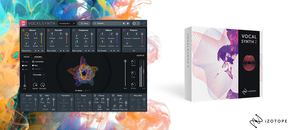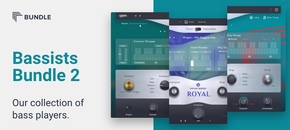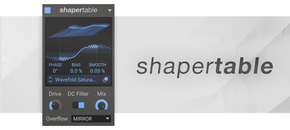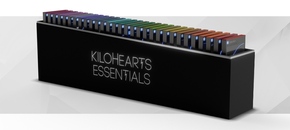MusicTech's Verdict: 9/10 & winner of MT Choice Award
Phase Plant from Kilohearts offers wavetable, sampling, noise and virtual-analogue synthesis in one modular-like plug-in. Phase Plant starts off promising to be a ‘best of’, but ultimately delivers on its creative power – which is what all synths should do. Truly inspirational.
The quest for the ultimate soft synth has been hotting up of late, with many companies really pulling out all the stops to reside in your hard-drive space. There have been great-looking options with incredible UIs, including the likes of Arturia’s Pigments and Audaire’s Zone, which both make the whole synthesis experience more intuitive and fun. Or there have been incredibly cheap options including Nektar’s Bolt, Rob Papen’s Go2 and Plug-in Boutique’s Carbon Electra 2 that simply rack up the features for very little outlay.
Kilohearts – the relatively small developer from Linköping, Sweden – has another angle entirely. In Phase Plant, it has developed a synth that uses a semi-modular approach so you can simply make it whatever you want it to be. Wavetable with a side order of noise? No problem. Analogue with some sampled content? No problem either. It’s bringing the best of the modular world to your desktop, and in doing so, Kilohearts might well have created one of the most appealing and innovative synths out there.
Snap to it
Kilohearts has already made waves in the software world with its range of so-called Snapins, multiple plug-in effects – some 28 at the time of writing – that can be used as VST, AU, AAX and Rack Extension plug-ins. The difference over normal plug-ins is that, by way of free SnapHeap and Multipass devices, they can also be used as extended effects racks. Here you can, for example, load them in series or parallel into SnapHeap and use the supplied modulation sources to create mightily powerful effects blocks, all of which run as one unified plug-in within your DAW.
Since all Kilohearts devices are Snapin compatible, this makes for a great modular ecosystem and this approach is very much what Phase Plant is about, albeit with synthesis rather than effects modules – you add your own Generators, Modulators and Effects to very much create your own bespoke system. In this sense, Phase Plant is very much what you want it to be, although, with over 400 presets, you also get a great range of sounds from variations of the synth, created by professional sound designers.
In use
You can choose from several options when buying Phase Plant – see box left – but putting it simply, you get, at the very minimum, the synth plus a bunch of free Snapins for $169 right up to the synth and everything that Kilohearts does for $349 (and, for once, the subs model of just $9.99 a month for this seems like good value). Installing is simply a matter of downloading the main Phase Plant installer, after which you’ll be presented with it and a list of whatever Snapin plug-ins you bought with the bundle. Check the ones you want, install and you’re ready to go.
Phase Plant almost encourages the more adventurous programmers from the off, opening with a blank screen for you to fill. Here, you can drag in whatever you want and construct something from scratch. Choose from four Generators: Analog (with multiple waveforms), Noise (brown, white, pink and more), Sampler (load in your own sounds or use those supplied from an extensive library) and Wavetable (use from a factory library or create your own). Within the Generator section, you can also add Filter or Distortion blocks. Utilities in this section also include Group, Aux, Mixer or Output Utilities.
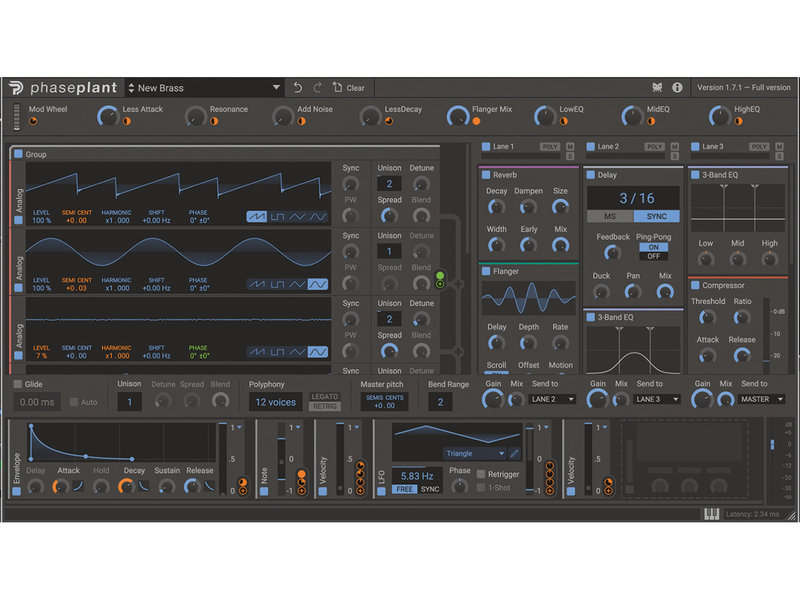
The Modulation section at the bottom of the screen allows you to select from five main modulation sources: Envelope, LFO, Random, MIDI and Utility. Within each are various syncable, frequency, depth and draggable parameters, as you might expect – and it’s very easy to set up as complex or as simple modulations as you could wish for. You click on a parameter and every possible destination with Effects and Generators is then indicated. Simply click on a destination and drag up with your mouse for the amount of depth.
The final main section is the Effects block which comprises three lanes of effects. You can route any of the Generators to one of these lanes (or direct to the output or effect side-band input). Effects here are basically whatever Snapins you have purchased with your Phase Plant bundle.
The really good news here is that you can also access all of Kilohearts’ other Snapins here and the ones you don’t own will still work, you just won’t be able to adjust parameters. Dragging around modules and constructing patches really does become intuitive very quickly, almost like you are cheating as you build sounds because you don’t really need to go in too deep to create something complex – it’s all done for you.
The drop-down menus also allow you to quickly reroute Generators or replace modules and the Modulation and effect targets and destinations are also easy connections to make. All in all, experimentation is clearly encouraged, making this very much a sound designer’s dream device.
The other way to get to know Phase Plant is to simply load in one of the many 400-plus presets to see how the professional sound designers have combined the various modules. It might be the lazier option – and one that I don’t mind admitting to initially taking – but you still quickly learn about the synth. Presets are laid out in sound types, including three for different bass types, chords, FX, keys and so on. I really love the descriptions next to the preset name which explain how the sound is made up while providing the odd tip to get the best out of it when playing.
The only slight shame is that you need to switch an up and down arrow to lose the list of presets – it would have been good to see the synth makeup change as you scroll through different sounds. Particularly pleasing, though, is the fully adjustable UI which allows you to fit all the Generators and devices in so you can see exactly what makes up each preset.
Together with those descriptions, this is a great way to enjoy Phase Plant. You really do get to see inside the programmer’s head as obvious modulation routings trigger different parameters.
Overall, it’s hard to quantify an overall sound for Phase Plant. There are a great number of very contemporary sounds for dance music here – in fact, I’d say more so than any other genre – but also some more subtle and dreamy pads for soundtracks. Many are clearly designed to show off the power of the synth, as you might have expected, but there is a great cross-section of contemporary and classic basses, some excellent sequences, some fabulous keys sounds and even a good variety of drum and percussion sounds.
Conclusion
Phase Plant is unusual in that it is both incredibly detailed but also incredibly simple to use. It is the kind of drag and drop synthesis you may not have experienced: as easy to use as something like Reason, but with enough possibilities, variations and permutations to satisfy many a hardened modular user.
As good as the synth’s presets are, and as much fun as I had stepping through them to discover the synth’s true power, I would encourage hands-on sound creation. Starting with a blank canvas might fill you with fear on most synths, but here, it’s just a matter of dragging blocks in, connecting, modulating with ease and hearing the results. It’s a synth that might be attempting to be the best of all worlds but its strength really lies in this creation. And in a world of attention-grabbing synths, what a strength that is to have.
Do I really need this?
We always say that having a good plug-in clear out is a good idea. Getting rid of the tyranny of choice – too many options to choose from when you want a simple bass sound, for example – is an essential process. Phase Plant could enable you to do some of that spring cleaning by offering one solution for multiple tasks. It’s not quite all you will need, but it takes big strides to that goal.
Pros
- Easy modular software synthesis to the power of (at least) four!
- Fabulous presets
- Simple operation, complex results
- A blank canvas is a good thing!
- Amazing modulation section
- Love those descriptions, too
Cons
- Presets can dominate UI
- Perhaps a bit too dance-led
Original Source: MusicTech

